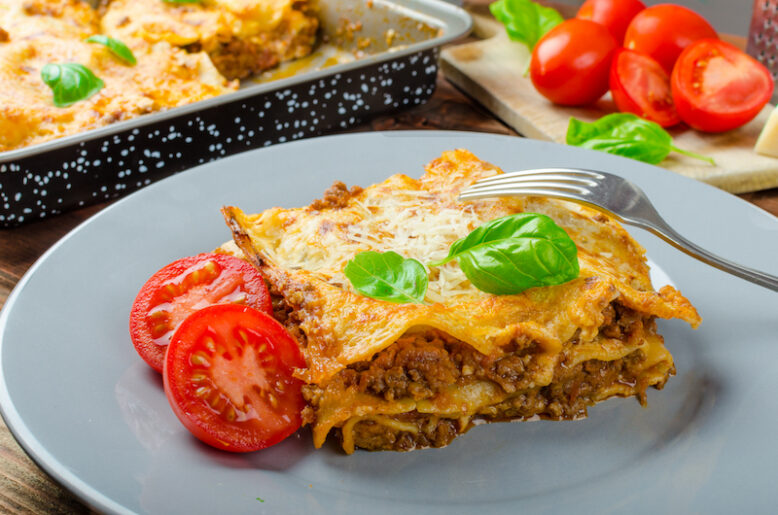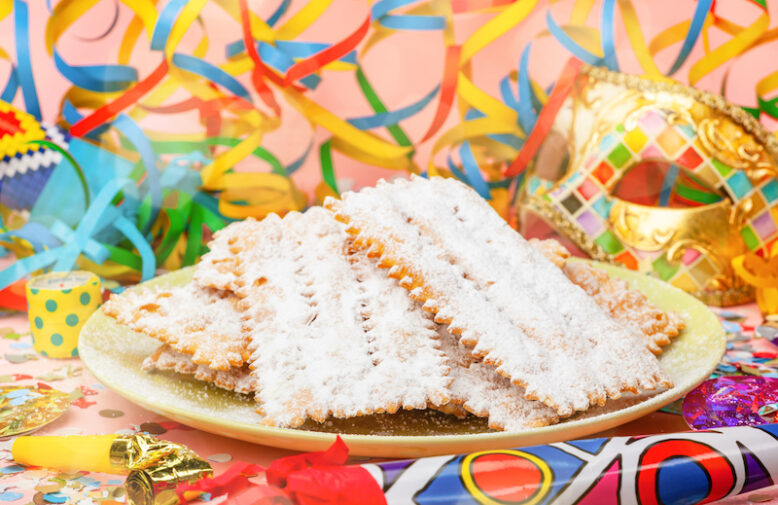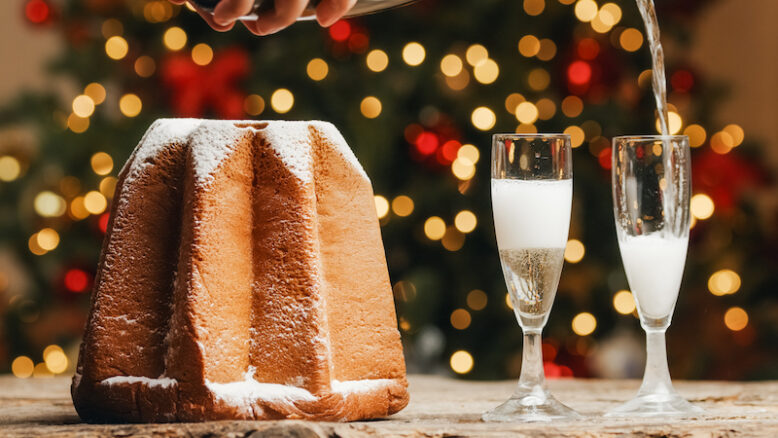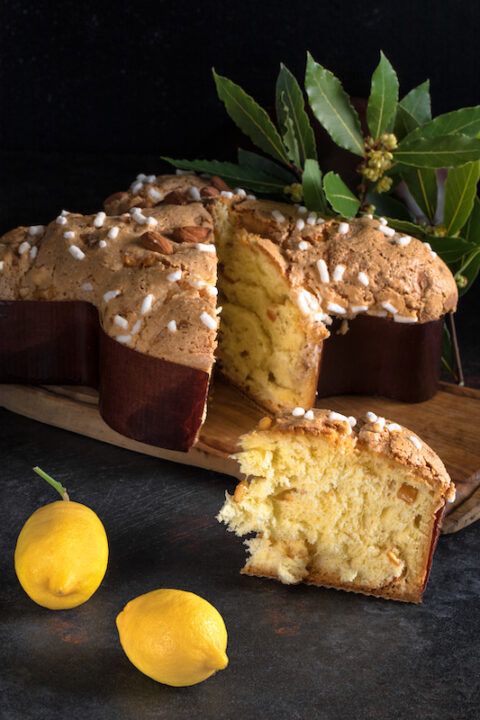Cosa si mangia in Italia nelle occasioni speciali
Italians are masters in the art of celebrating special occasions, and food consistently takes on a pivotal role. Whether it’s a wedding, graduation, or any significant event, food always steals the show, bringing people together and forging indelible memories.
Gli italiani sono maestri nell’arte di far festa e il cibo riveste sempre un ruolo fondamentale in queste occasioni. Che si tratti di un matrimonio, una laurea o un evento importante, il cibo è sempre protagonista, capace di unire le persone e creare ricordi indimenticabili.
However, Italian culinary traditions vary greatly from region to region and even from family to family. So much so that attempting to list all the different dishes reserved for special occasions would turn this article into an extensive treatise on Italian cuisine! Nevertheless, it is possible to highlight some foods that are commonly enjoyed throughout the country during holidays and special celebrations.
Tuttavia, le tradizioni culinarie italiane variano notevolmente da regione a regione e anche da famiglia a famiglia. A tal punto che elencare tutti i diversi piatti riservati alle occasioni speciali trasformerebbe questo articolo in un trattato sulla cucina italiana! È possibile però identificare alcuni cibi che vengono comunemente consumati in tutto il paese durante le festività e le ricorrenze speciali.

Lasagne
Among the foods that are eaten on special occasions in Italy, lasagne reigns supreme as the undisputed star of Sunday family gatherings and get-togethers with friends. This iconic dish of egg pasta layers alternating with ragù sauce and velvety béchamel have that rich, creamy deliciousness that feels like home.
Tra i cibi consumati nelle occasioni speciali in Italia, le lasagne sono il piatto indiscusso dei pranzi domenicali in famiglia e tra amici. Questo piatto a base di strati di pasta all’uovo alternati con salsa ragù e una deliziosa besciamella offre un primo ricco e cremoso che sa di casa.
Cooking lasagne is an art that each region interprets in its own way. In Liguria, for example, ragù is often replaced with pesto, while in Veneto, red radicchio is often used. But it is in the regions of Emilia Romagna and Campania where the origins of modern lasagne become a delightful rivalry.
Preparare le lasagne è un’arte che ogni regione interpreta a modo proprio, rendendo così il piatto unico nelle diverse parti d’Italia. Ad esempio, in Liguria spesso il tradizionale ragù viene sostituito con il pesto, creando un sapore caratteristico. Nel Veneto, invece, è comune l’utilizzo del radicchio rosso per dare un tocco distintivo al piatto. E poi ci sono l’Emilia Romagna e la Campania, dove le origini della moderna versione delle lasagne danno vita a una deliziosa rivalità culinaria.
While Emilia Romagna proudly claims its stake in lasagne history with a recipe that dates back to the 14th century, it was Naples that revolutionised this beloved dish in the 19th century by introducing the use of tomato sauce. The proof lies within the pages of the book “La vera cucina napoletana” by Francesco Palma, published in 1881, containing the first documented recipe for lasagne with tomato sauce. And let’s not forget Francesco II of Bourbon, the King of the Two Sicilies, who earned the endearing title of the “Lasagna King” due to his insatiable love for this delicious specialty!
Mentre l’Emilia Romagna rivendica con orgoglio la sua parte nella storia delle lasagne, grazie a una ricetta che risale al XIV secolo, è a Napoli che dobbiamo l’introduzione del sugo di pomodoro nel XIX secolo. La prova di ciò si trova tra le pagine del libro “La vera cucina napoletana” di Francesco Palma, pubblicato nel 1881, che contiene la prima ricetta documentata per le lasagne al sugo di pomodoro. E come dimenticare Francesco II di Borbone, Re delle Due Sicilie, che era soprannominato “Re Lasagna” per il suo grande apprezzamento per questa specialità!

Cotechino e lenticchie
New Years celebrations in Italy call for plates of steaming lentils and succulent cotechino. Of course, spumante, red attire, and fireworks add to the festive ambiance, but the true essence of this celebration lies in the moments shared around the table.
Durante le celebrazioni di Capodanno in Italia, è tradizione servire gustosi piatti di lenticchie e cotechino. Ovviamente, non possono mancare lo spumante, i vestiti rossi e i fuochi d’artificio, ma come sempre il momento più significativo è intorno alla tavola.
Interestingly, the tradition of eating lentils on New Year’s can be traced back to the Romans, who regarded these humble legumes as symbols of prosperity and a wise investment for the upcoming months. In fact, they would exchange bags filled with lentils as a thoughtful gift.
Curiosamente, la tradizione di mangiare lenticchie a Capodanno può essere fatta risalire ai Romani, che consideravano questi umili legumi come simbolo di prosperità e un investimento per i mesi a venire. Infatti, si scambiavano sacchetti pieni di lenticchie come gesto premuroso.
Cotechino, a pork-based delicacy, has its fair share of enthusiasts and critics. Being a rather rich and fatty dish, it may not cater to everyone’s palate. Nevertheless, it’s worth noting that in the past, pork was regarded as a luxury reserved for the fortunate few. Consequently, the custom of including cotechino in New Year’s meals has evolved into a wish for wealth and prosperity (after all, doesn’t the piggy bank have the shape of a little pig?!).
Il cotechino, una prelibatezza a base di carne di maiale, ha estimatori e critici. È un piatto particolarmente grasso, il che può non incontrare i gusti di tutti. Tuttavia, è interessante notare che in passato la carne di maiale era considerata un lusso riservato a pochi privilegiati. Pertanto, l’abitudine di includere il cotechino nei pasti del Capodanno è diventata un simbolo di auspicio di ricchezza e prosperità (e poi non dimentichiamo che spesso i salvadanai hanno proprio la forma di un maialino!).
The origins of cotechino are credited to Pico della Mirandola, who in the 16th century suggested a clever solution to his fellow townspeople besieged by papal troops. He advised them to slaughter the remaining pigs and preserve the meat in their own skins, infused with aromatic spices. This ingenious method ensured a lasting food supply – and a truly delightful delicacy was born!
La nascita del cotechino è attribuita a Pico della Mirandola, che nel XVI secolo consigliò ai suoi concittadini assediati dalle truppe papali di macellare i loro pochi maiali rimasti e conservare la carne nella loro stessa pelle, con l’aggiunta di spezie aromatiche, in modo da poter avere scorte alimentari durante le battaglie. Il risultato fu una vera delizia!
Chiacchiere
When the Carnival celebrations approach, it’s time to dive into the delightful world of chiacchiere! These delicious treats are aptly named “chit-chats,” because just like the lively conversations we share with our friends, one bite of chiacchiere leads to another, sparking a chain reaction of pure culinary bliss!
I festeggiamenti del Carnevale portano sulle tavole italiane le chiacchiere. Mai nome fu più appropriato per questi deliziosi dolci – un morso tira l’altro, proprio come le “chiacchiere” tra amici!
During February, these flat, sweet fried pastries can be found in bakeries and supermarkets all across Italy, sporting a multitude of names that seem never-ending. From frappe to bugie in Piedmont, meravigliosa in Sardinia, fiocchetti in Emilia Romagna, cenci in Tuscany, and the list goes on, each region adds its own twist!
Nel mese di febbraio, queste sfoglie dolci e croccanti sono disponibili presso panetterie e supermercati in tutta Italia, anche se con nomi molto diversi. Ad esempio, in Piemonte vengono chiamati bugie, nel Lazio frappe, in Toscana cenci e così via. Insomma, come sempre ogni regione ha una sua variante specifica!
Once again, we have to thank the ancient Romans for this gastronomic delight. During the pagan celebration of Saturnalia, they would prepare frictilia, sweet treats made from flour and eggs, fried in lard, which served as the precursors to our modern-day chiacchiere. This simple and fast recipe was perfect for delighting the jubilant crowds.
Ancora una volta, dobbiamo riconoscere il merito agli antichi Romani per averci regalato questa prelibatezza. Durante la festività pagana dei Saturnali, si preparavano le frictilia, dolci a base di farina e uova e fritti nel lardo, precursori delle nostre chiacchiere. Facile e veloce, questa ricetta era perfetta per deliziare le folle in festa.
Indeed, preparing chiacchiere is incredibly simple. You just need flour, eggs, and sugar. After that, it’s a matter of mixing the ingredients, shaping the dough, and frying it in the sizzling oil until it achieves a delightful golden hue. The final touch? A generous dusting of powdered sugar.
Effettivamente, le chiacchiere sono facilissime da preparare. Servono solo farina, uova e zucchero. Dopodiché, non si deve far altro che mescolare gli ingredienti, dare forma all’impasto e friggere il tutto fino a quando raggiunge la perfetta doratura. Il tocco finale? Una generosa spolverata di zucchero a velo!

Panettone and Pandoro
Each year, during Christmas, the rivalry between Panettone and Pandoro becomes a spirited topic that ignites discussions among family and friends, surpassing even politics and gossip. This surely is testament to the profound connection we have with our culinary passions! These two iconic Italian Christmas desserts have gained global recognition, owing to their distinctive flavours and the meticulous craftsmanship involved in their creation, becoming symbolic of Italy’s culinary heritage during the festive season.
Ogni anno, durante il Natale, la rivalità tra Panettone e Pandoro è un argomento che anima le discussioni in famiglia e tra amici persino più di politica e pettegolezzi, dimostrando ancora una volta quanto la passione per il cibo sia radicata in noi. Questi due iconici dolci natalizi sono ormai famosi in tutto il mondo grazie al loro sapore unico e all’artigianalità della lavorazione, diventando un vero e proprio simbolo della tradizione culinaria italiana durante le festività.
Panettone, originating from Milan, is a beloved Italian Christmas classic. This cylindrical-shaped sweet bread loaf, crowned with a dome-like top, boasts a soft and fluffy dough brimming with raisins and candied fruits. Despite the numerous variations available on the market, the original recipe continues to be the all-time favorite. Legend has it that the first Panettone was created during the 16th century at the court of Ludovico il Moro, thanks to the ingenious idea of a humble apprentice named Tony. Initially dubbed “Pan de Toni” in honour of its creator, it was eventually christened Panettone.
Nato a Milano, il Panettone è il classico natalizio per antonomasia. Si tratta di un dolce a forma cilindrica e una sommità a cupola, con un soffice impasto arricchito da uvette e canditi. Nonostante le molte varianti che si possono trovare in commercio, la ricetta originale resta sempre la più amata. Si dice che il primo panettone sia stato creato alla corte di Ludovico il Moro nel XVI secolo grazie all’ingegno di un umile garzone di nome Tony e per questo fu inizialmente chiamato “Pan de Toni”, successivamente ribattezzato Panettone.
In contrast, Pandoro hails from Verona and resembles a trunk with an 8-pointed star base. This heavenly brioche-like dessert was already known in ancient Rome, but it was officially patented in its modern form by confectioner Domenico Melegatti on October 14, 1894. Quick tip: Pandoro reaches its zenith when served with a delectable mascarpone cheese cream complemented by a hint of brandy – yum!
Il Pandoro, invece, è originario di Verona e ha una forma a tronco con una base a stella a 8 punte. È un dolce estremamente soffice, quasi come una brioche, e sembra fosse già conosciuto nell’antica Roma. Ma fu il pasticcere Domenico Melegatti a brevettare ufficialmente la ricetta moderna il 14 ottobre 1894. Per rendere ancora più gustoso il pandoro, consiglio di servirlo con una deliziosa crema a base di mascarpone e un tocco di brandy – una bontà!

Colomba
During the Easter holidays, Colomba takes center stage in every supermarket and pastry shop, captivating customers with its irresistible flavour. This delectable dove-shaped cake, similar to Panettone, is renowned for its soft and light consistency achieved through lengthy leavening times. Moreover, the glaze, adorned with almonds and sugar crystals, forms a delightful crust that perfectly complements the tenderness of the dough, which is enhanced with the addition of candied orange peels.
Durante il periodo pasquale, la Colomba diventa la protagonista indiscussa in ogni supermercato e pasticceria, conquistando i clienti con il suo irresistibile sapore. Simile al Panettone, questo delizioso dolce a forma di colomba si distingue per i lunghi tempi di lievitazione che conferiscono alla pasta una consistenza soffice e leggera. Inoltre, la glassa a base di mandorle e granella di zucchero crea una golosa crosticina che si sposa perfettamente con la morbidezza dell’impasto, all’interno del qualche vengono aggiunte solo scorze di arancia candite.
According to legend, the origins of the Colomba can be traced back to the Lombard era. It is said that following King Alboin’s triumph over the city of Pavia in 572, just before Easter, the local population presented the sovereign with a sweet bread shaped like a dove as a gesture of peace. Needless to say, the king was ecstatic, and ever since, that dove-shaped sweet bread has become an enduring symbol of Easter.
Secondo la leggenda, le origini della Colomba risalgono all’era longobarda. Si narra infatti che dopo la vittoria del re Alboino sulla città di Pavia nel 572, poco prima di Pasqua, la popolazione locale offrì al sovrano un pane dolce a forma di colomba come segno di pace. Inutile dire che il re ne fu entusiasta e da allora quel dolce a forma di colomba è diventato un simbolo della Pasqua.
Fast forward to the 1930s, when Dino Villani, the creative advertisement director at the famous Milanese confectionery company “Motta” came up with the idea of recycling the same dough used for panettone and the machinery to put on the market a new cake for Easter. It was a success!
Per giungere alla versione moderna che conosciamo oggi, dobbiamo aspettare gli anni ’30, quando Dino Villani, il direttore pubblicitario della celebre azienda di pasticceria milanese “Motta”, ebbe l’idea di riutilizzare l’impasto e i macchinari tradizionalmente usati per il panettone per creare un nuovo dolce per la Pasqua. Fu un successo!

Pasticcini
Pasticcini are the classic sweet treat for Sunday family gatherings as well as a thoughtful gesture when invited to dine with friends. Their vibrant colours, irresistible array of flavours, and diverse textures make them the perfect finale to a traditional Italian meal. Similar to chiacchiere, these delightful pastries are known by different names depending on the region, such as paste, pastarelle, mignon, and more. Nevertheless, their essence remains unchanged: they are small delicacies meant to be shared during cherished moments with your loved ones.
I pasticcini sono il classico dolce dei pranzi domenicali in famiglia, nonché un pensiero sempre gradito da portare quando si è invitati a mangiare da amici. I loro colori vivaci, i mille gusti irresistibili e le diverse texture tra cui scegliere, rendono i pasticcini il finale perfetto per un pasto tradizionale. Come per le chiacchiere, anche i pasticcini vengono chiamati in modo diverso a seconda della regione in cui ci si trova: paste, passerelle, mignon, e così via. La loro essenza però resta la stessa: piccole delizie per condividere momenti speciali con i propri cari.
Pasticcini are an essential component of every celebration in Italy. No birthday or event is complete without a tray of delicious pastries and a chilled bottle of sweet spumante – a staple sight at joyous occasions across the country!
I pasticcini sono parte integrante di ogni celebrazione. Non c’è compleanno o evento in Italia senza un vassoio di pasticcini e una bottiglia fresca di spumante dolce – un appuntamento fisso nelle occasioni speciali!
Variety is the beauty of pasticcini. While cannoncini (cream horns) and bignè (cream puffs) are the all-time favourites, Italian pastry shops boast an incredible selection that goes beyond your wildest dreams. From delicate tartellette alla frutta (fruit tarts) to single-portion cakes, pasticcini are as visually appealing as they are delectable. And let’s not forget the local delights that await you in each region!
La bellezza dei pasticcini risiede proprio nella loro straordinaria varietà. Cannoncini e bignè sono grandi classici, ma basta entrare in una qualsiasi pasticceria per rendersi conto dell’incredibile varietà tra cui scegliere. Dalle gustose tartellette alla frutta alle deliziose monoporzioni, i pasticcini sono tanto belli da vedere quanto da gustare. Senza contare le varianti locali offerte da ogni regione!

Valentina is a travel writer in love with her country. Having travelled widely around the globe, she realised there was more to explore closer to home and decided to put the passport aside for a while. You can follow her adventures around Italy on her blog myitaliandiaries.com

Valentina Nicastro is a travel writer in love with her home country, Italy. Having travelled widely around the globe, she realised there was more to explore closer to home and decided to put the passport aside for a while. When she is not immersed in documenting Italy, you’ll find her donning her communication consultant hat, weaving words as a content writer and bridging linguistic divides as a translator.


